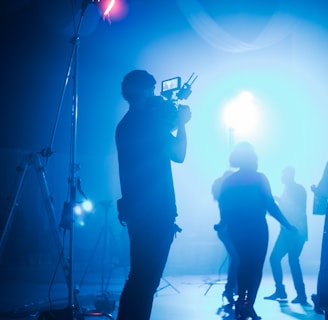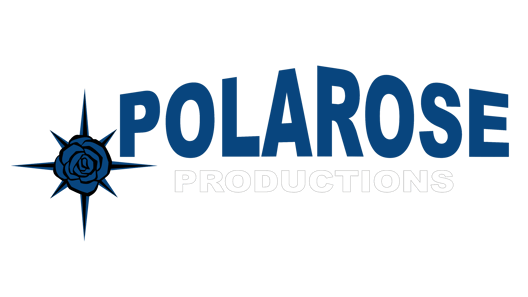Terms and Words to Know Before Going On Set
Heading to a film set can be overwhelming, especially with all the industry-specific terminology thrown around. In this blog post, we’ll break down essential terms you need to know before stepping onto set. From "call sheets" to "gaffers," understanding the lingo will not only help you communicate better but also navigate the set with confidence. Whether you're an aspiring filmmaker or a crew member, this guide will ensure you’re prepared for your next film shoot!
1/18/20254 min read


If you’re new to working on a film set, you may find yourself bombarded with unfamiliar terms and jargon. The film industry, like many others, has its own specific language. Knowing key terminology is essential not just for smooth communication, but also for ensuring that you understand what’s going on and what’s expected of you. Whether you’re an aspiring filmmaker, a crew member, or just someone who wants to understand the process better, this guide will give you an overview of common terms you’re likely to encounter on set.
1. Call Sheet
This is the bible of any film set. A call sheet is a daily schedule that outlines everything happening on the day of the shoot, from call times to the planned scenes, locations, and special instructions. It also lists key personnel and their responsibilities for the day.
2. Gaffer
The gaffer is the head of the lighting department. They work closely with the director of photography (DoP) to create the film’s visual mood and tone through lighting. They’re responsible for setting up the lights, ensuring the lighting design fits the director’s vision, and managing the lighting crew.
3. Best Boy
In the lighting and grip departments, the best boy is essentially the assistant to the department head (the gaffer in lighting and the key grip in grip). They manage equipment, help coordinate tasks, and often supervise other crew members in their respective departments.
4. Slate
The slate is a board used to mark the start of a scene. It’s crucial for syncing sound and picture during post-production. The slate includes information such as the scene number, take number, and production title, helping editors keep track of footage.
5. Block
This term refers to the rehearsal or marking of the movements of actors or the camera. Before the cameras start rolling, the director and the actors “block” the scene, determining where actors will move and what the camera’s positioning will be.
6. Wrap
“Wrapping” signifies the completion of a day’s work or the end of the entire shoot. It’s typically followed by the saying “that’s a wrap,” meaning the work for the day or the shoot is complete.
7. Hot Set
This term means the set is “live” and should not be disturbed or changed. Everything is in place, and the set is ready for filming, so any changes could throw off the timing or continuity.
8. Coverage
Coverage refers to how many different angles or shots are filmed for a particular scene. For example, a director may call for “full coverage” if they want to capture the scene from multiple camera angles to have more options during editing.
9. Continuity
Continuity refers to maintaining consistency in all elements of the film. This includes things like costumes, props, and even lighting between shots to ensure that everything matches across scenes and takes.
10. Stand-In
A stand-in is someone who takes the place of an actor during rehearsals or technical setups. They’re used to set the camera angles, lighting, and blocking before the lead actor steps in to perform the actual scene.
11. Grip
A grip is a crew member who works with equipment that supports the cameras. They’re responsible for the rigging, dolly tracks, and movement equipment that help the camera achieve its desired motion. Grips play a key role in ensuring the camera can move smoothly and safely during shots.
12. Key Grip
The key grip is the head of the grip department and is in charge of all rigging, lighting set-ups, and camera movement tools. They work closely with the gaffer to execute the director’s vision through physical staging and movement.
13. Dolly
A dolly is a platform on wheels used to move a camera smoothly during shots. It’s typically used when the director wants to achieve a moving shot without a shaky or unsteady camera.
14. Soundstage
A soundstage is a large, controlled indoor space where film and TV productions are shot. It’s typically soundproof and can be customized with lighting, set designs, and special effects.
15. B-Roll
B-roll refers to supplementary footage that is intercut with the main shots (A-roll). It’s used to support the narrative and give the viewer context, such as establishing shots or reaction shots.
16. Grip Truck
The grip truck is a large vehicle used to transport all of the grip and lighting equipment to the set. It contains all the tools, rigs, and other materials necessary for camera movement and lighting setups.
17. Foley
Foley is the process of recording sound effects that are added in post-production. These sounds are created by Foley artists and include everything from footsteps to doors creaking to the rustling of clothes. It’s essential for adding realism and detail to the final mix.
18. Director’s Cut
A director’s cut refers to the version of the film that represents the director’s vision, typically before any edits are made by producers, studios, or distributors. It often includes longer scenes or creative decisions that might have been trimmed in the final version.
19. ADR (Automated Dialogue Replacement)
ADR is the process of re-recording dialogue in post-production. If there’s poor audio quality or if an actor’s voice needs to be changed, the actor records the lines again in a studio while watching the footage to sync up the words with their performance.
20. Upstage/Downstage
These terms come from the traditional theater stage and refer to the positioning of actors in relation to the audience. On a film set, upstage refers to the area furthest from the camera, while downstage refers to the area closest to the camera. However, on a film set, these terms are used more loosely to describe general stage directions.
21. Green Screen
A green screen is a special effects tool that allows filmmakers to replace the green background with different settings or digital environments. It's widely used in everything from sci-fi epics to commercials.
22. Lavalier Microphone
A lavalier microphone, often referred to as a lapel mic, is a small microphone that clips onto a person’s clothing. It’s commonly used for dialogue, especially in interviews or where hands-free operation is needed.
Wrapping Up
Understanding these terms will give you a good foundation when working on set. Familiarity with the language will not only make communication easier but also help you perform your job more effectively. The film industry has a lot of specialised lingo, but with these terms in your arsenal, you’ll feel more confident navigating any set.
Polarose Productions is a full-service film and video production company based in South London, bringing visions to life for individuals and businesses with creativity, expertise, and end-to-end support.
Email: contact@polarose.uk
Tel: 02080505788
© Polarose Productions Ltd. 2025. All rights reserved.


